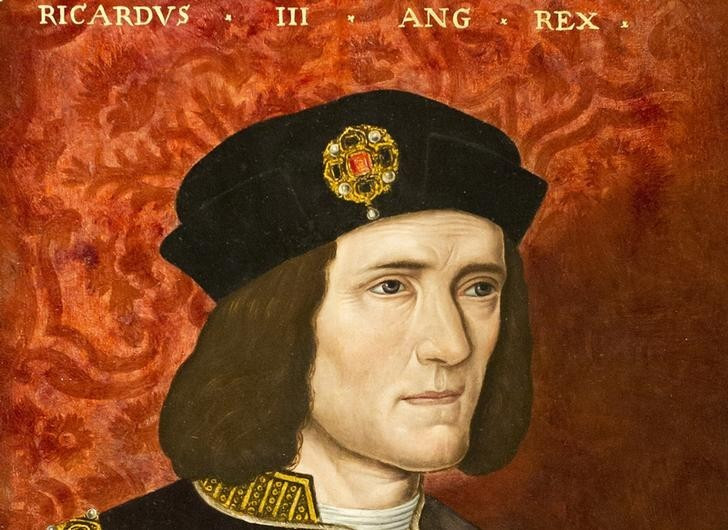'King Richard III' Car Park Skeleton Tests Completed

A skeleton found in a Leicester car park could be confirmed as being that of Richard III, when DNA and forensic test results are announced on Monday 4 February.
A group of scholars will decide whether a skeleton found under a council car park in Leicester is the Plantagenet king, who died in battle at nearby Bosworth Field in 1485.
They will analyse the latest findings in a series of scientific tests on the bones that may support the theory that the battle-scarred body was buried under the floor of a medieval church, on a site where Leicester's social services department later stood.
A detailed analysis of the Leicester skeleton, and the collective decision of the experts, will be publicly revealed on 4 February.
Scientists, archaeologists and historians involved in the project have been sworn to secrecy until the final results of radiocarbon dating, DNA tests and bone analysis are released, along with a three-dimensional reconstruction of his head and face.
However, one expert said that he would be surprised if the initial excitement over the skeleton was shown to have been over nothing. "The circumstantial evidence is just so strong," he said.
The skeleton, excavated last September, has pronounced curvature of the spine caused by severe scoliosis which would have made the person's right shoulder appear visibly higher than the left - supporting the Shakespearean description of Richard as "rudely stamp'd... deformed, unfinish'd".
The skeleton seems to have suffered a traumatic blow to the head, which cleaved the back of his cranium, and a barbed arrowhead was found embedded between the vertebrae. Both must have occurred at or near the moment of death, supporting the view that the man died on a medieval battlefield.
However it was the position of the burial site that has proved most intriguing. The skeleton was found under the choir floor of the abbey church of Greyfriars monastery, which although destroyed centuries ago has recently been located under the council car park by archaeologists.
Only high-status people would have been interred under a church choir, exactly the place that historical records said the body of Richard was buried.
Geneticists at Leicester University working on the skeletal remains have extracted samples of mitochondrial DNA, which is inherited solely down the maternal line.
They have compared it with the mitochondrial DNA of Michael Ibsen, a Canadian-born carpenter living in London who is, according to genealogical records, related to Richard's sister, Anne of York, through 16 maternal generations.
"It is exciting to be able to play a small part in something that is potentially so historically important, but also nerve-racking because it remains to be seen whether the tests will be conclusive," said Ibsen.
"I think for so many reasons it's going to be an extraordinary announcement," said Philippa Langley of the Richard III Society, a group which campaigns for a reassessment of the mediaeval monarch, who reigned for just over two years.
Richard III: The King in the Car Park, a TV programme following the story of the historical find, will air in the UK on Channel 4, Monday 4 February, 9pm.
© Copyright IBTimes 2025. All rights reserved.






















